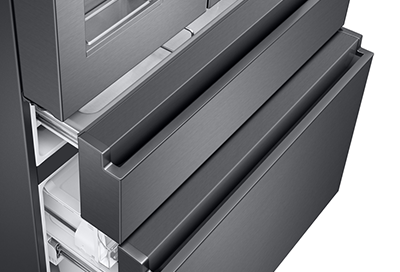
Condensation, moisture, or mold between the refrigerator doors

When condensation, moisture, or mold forms between the refrigerator doors or on top of the freezer door, this is caused by high humidity, energy saving by the refrigerator, or incorrect usage.
To determine whether Energy Saver is on or off, check the Energy Saver icon. When Energy Saver is on, the icon will be illuminated.
For details on your refrigerator, see your user manual.
When Energy Saver is on, a small amount of energy will be saved, but condensation may form between the refrigerator doors. The only energy saving is from the heater in the middle hinge flap.
When Energy Saver is off, the heater in the middle hinge flap is activated, which will work to prevent condensation between the refrigerator doors. This will expend slightly more energy than if Energy Saver is on.
Even when Energy Saver is off, condensation can still form, especially in humid environments or the summer months. This is normal and does not indicate a defect. If the heater in the middle hinge flap is not performing correctly, the refrigerator will show an error code.
Since condensation can form even if Energy Saver is off, be sure to wipe it dry periodically (watch the video for instructions on cleaning the door seals). If enough moisture collects in between and around the center of the doors, it will run down the center and collect on top of the freezer door. If the moisture remains long enough, it can cause mildew or mold.
Contact Samsung Support


